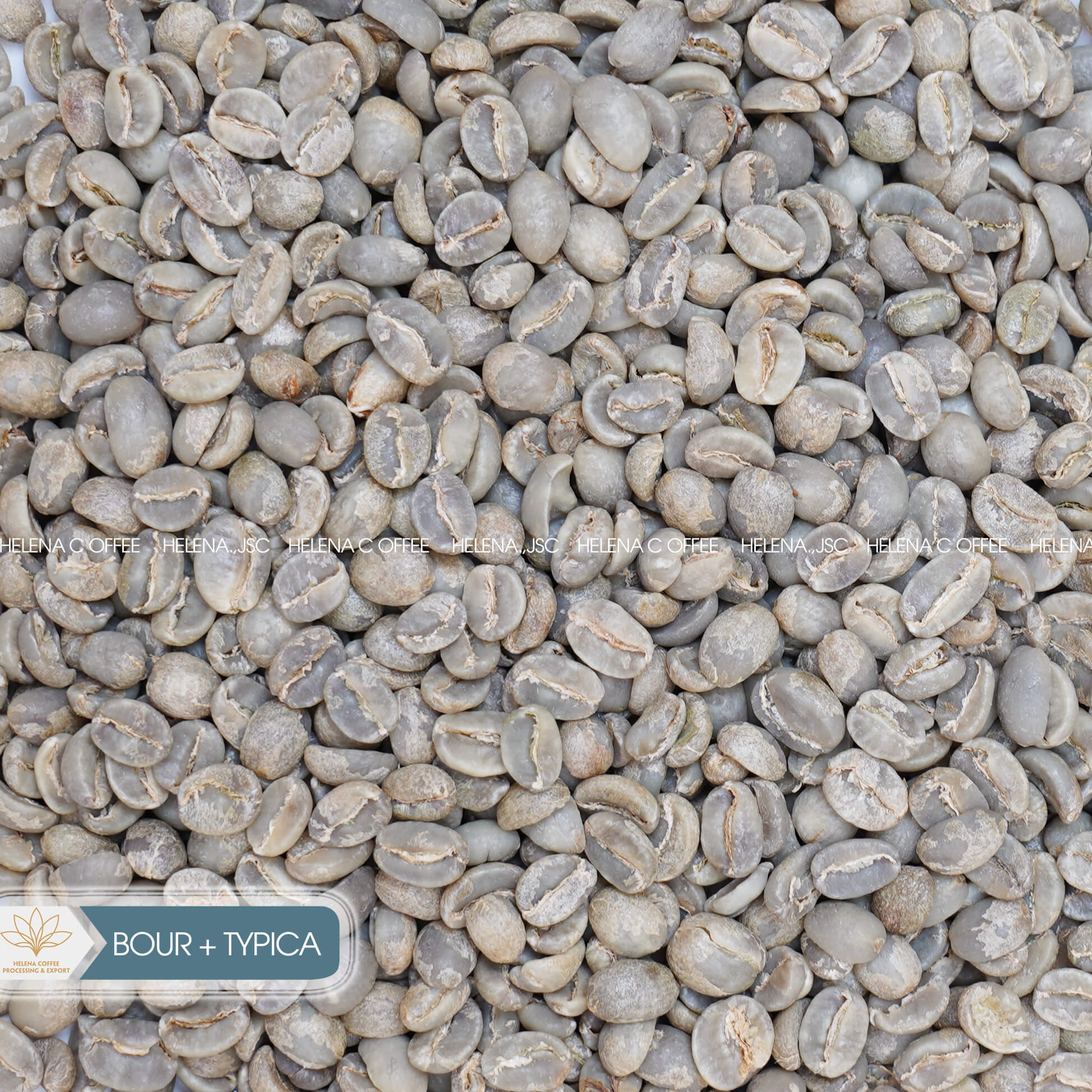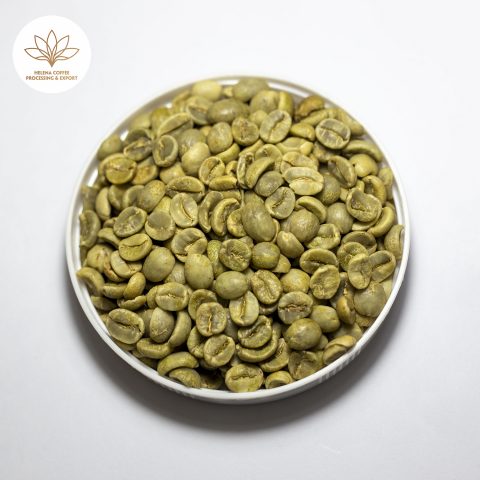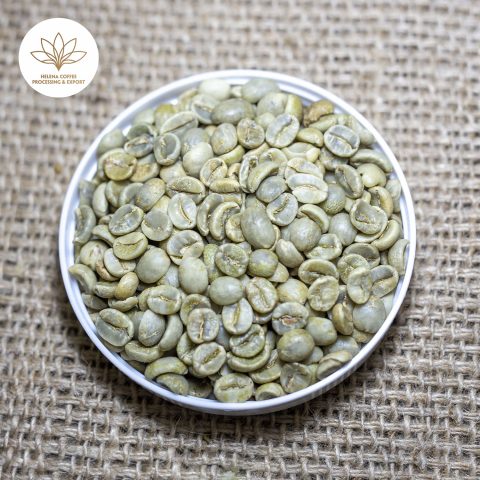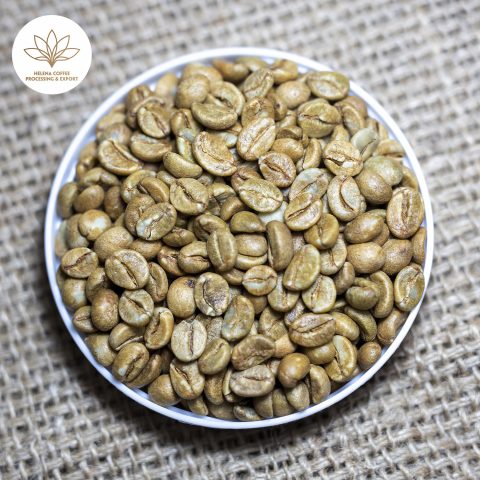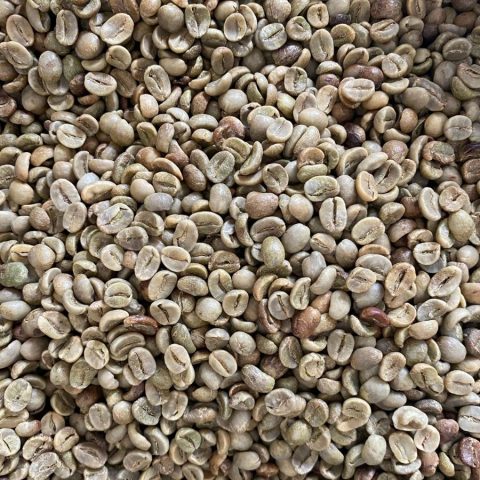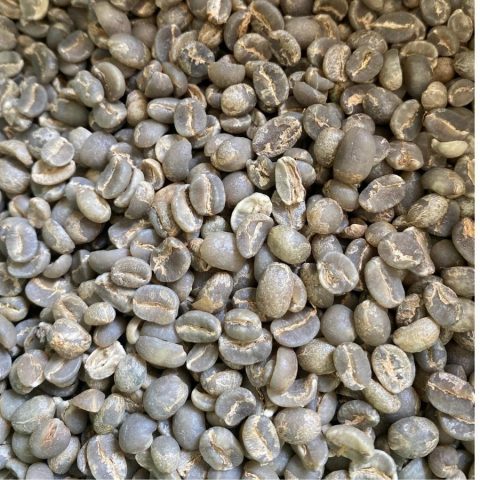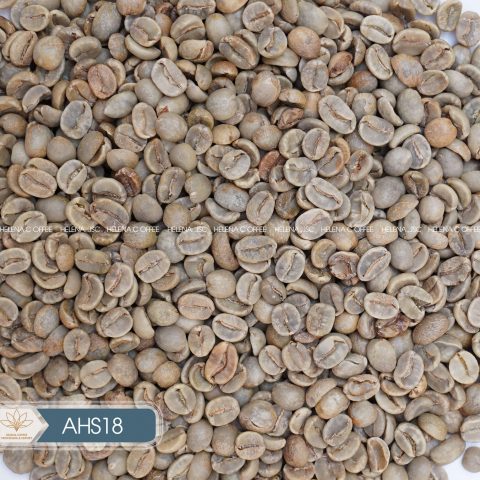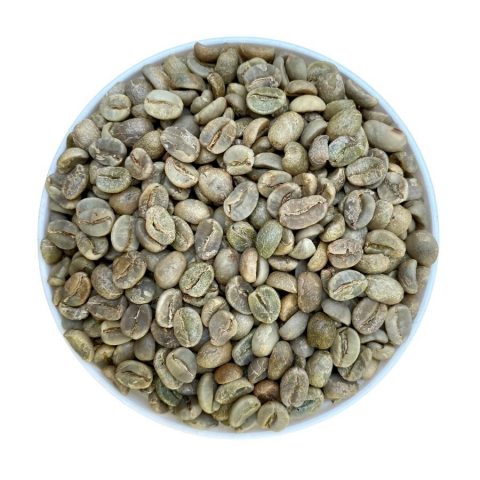Vietnam Yellow Bourbon Coffee Beans – Grade 1
- Home
- Products
- Vietnamese Arabica Green Coffee Beans
- Vietnam Yellow Bourbon Coffee Beans – Grade 1
Vietnam Yellow Bourbon Coffee Beans – Grade 1
$12.50 $11.90
- Variety: Bourbon
- Region: Son Duong, Da Lat – Lam Dong
- Elevation: >1550m
- Processing: Natural Processed
- Ripe Rate: 98-99%
- Moisture: 12.5%
- Foreign Matter: 0.2%
- Black: 0.2%
- Broken: 0.2%
- Rate on Sieve: 90%
- Bean size (Sieve): S18, S16
- Capacity: 100 tons/year
- Price per kilogram: $/kg
Related products
You may also like…



Vietnam Bourbon Coffee Beans – Grade 1: Taking its name from the island of Réunion (then called Bourbon), Bourbon coffee, with its sweetness and lightness, has conquered many generations and become an “immortal” monument in the coffee industry today.
1. What is Bourbon coffee, biological characteristics of Bourbon coffee?
Bourbon is a coffee variety that belongs to a subspecies of Arabica (a natural mutation from Typica of genetic importance in the world). As mentioned, Bourbon coffee got its name and originated from the French island of Bourbon, first brought to Vietnam by the French in 1875. They set up several coffee plantations to cultivate this coffee breed at that time.
Biologically, Bourbon tends to have a single main root (if joined from Yemen) and tends to form multiple stems (if joined from Ethiopia). Bourbon fruit when ripe can be red, orange, and yellow depending on the variety (red or yellow fruit is common).
Bourbon coffee beans are usually rounder than Typica coffee beans. In terms of color and size of leaves, young leaves are green or yellow copper, while mature leaves are more significant than Typica leaves with wide and wavy shapes. The side branches of the Bourbon coffee tree usually grow at an angle of about 60° to the main stem.
Bourbon coffee trees grow lushly at an altitude of 1,100m (maybe up to 2,000m) above sea level.
Compared with the Typica coffee variety, Bourbon coffee has a higher yield of 20-30% (coffee quality is similar). Despite having high growth potential and economic profit, Bourbon coffee is often susceptible to diseases and pests.
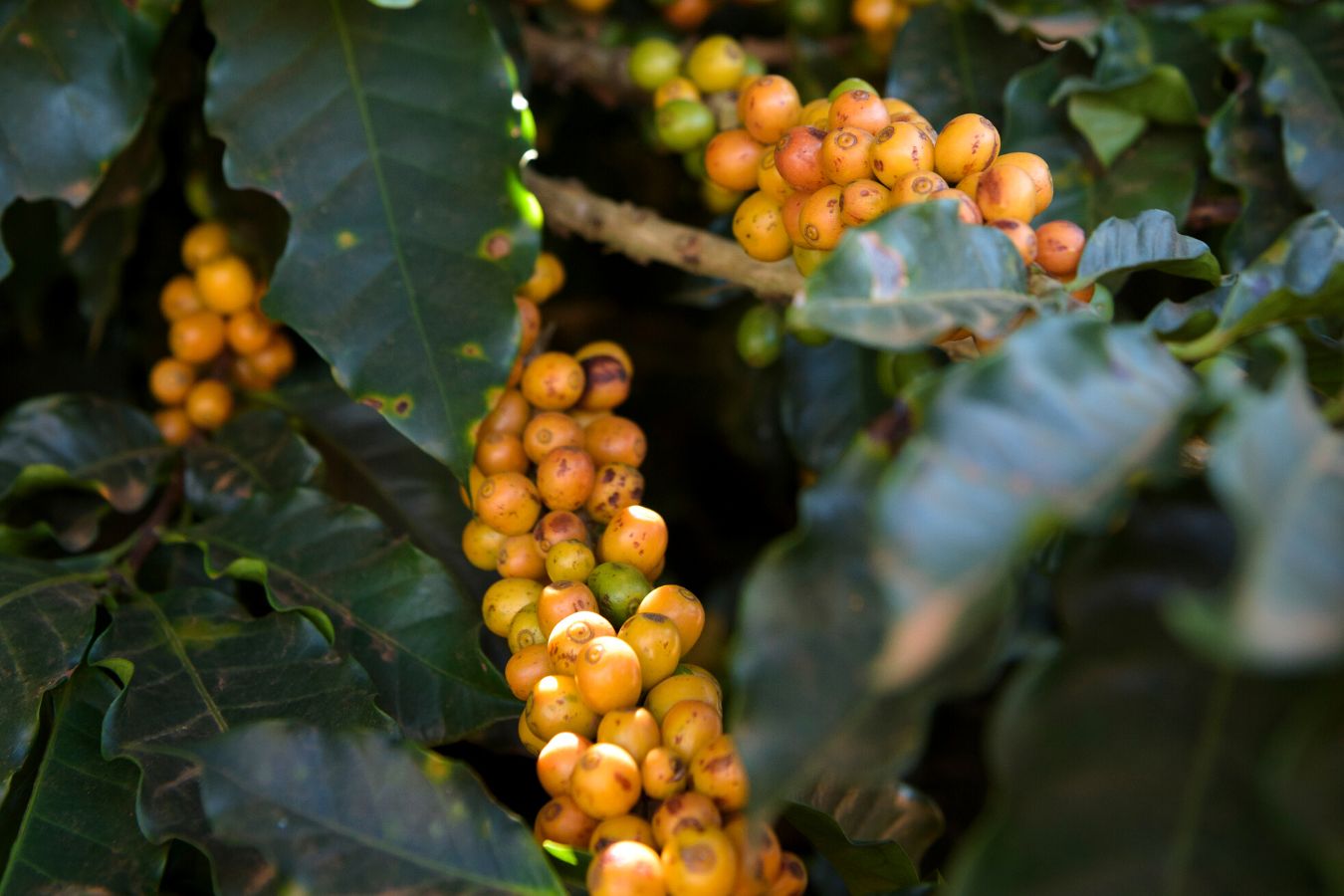
In addition, a distinctive feature of Bourbon coffee is that its final flavor will always depend on altitude, soil conditions, nutrients, fertilizers, and farming techniques to produce the best results. Therefore, although growing in the same land, the taste of Bourbon coffee will have distinct differences; there are good crops and flavors, but there are also flawed and poor-quality Bourbon coffee crops.
2. Origin of Bourbon coffee cultivation
According to the narratives of many generations and historical documents, it is known that Bourbon coffee, in particular, and Arabica, in general, originated in the southwestern region of Ethiopia and were present in the port of Yemen in the 16th century. WCR, in the 1700s, French missionaries brought the Bourbon coffee plant to Bourbon Island (now La Réunion Island in the Indian Ocean) three times (in 1708, 1715, and 1718) until the mid-19th century, the tree Bourbon coffee is always present on this island.
French missionaries (Spiritans) continue to bring Bourbon coffee varieties to Africa. From the trees first planted at La-Reunion, in 1859 they were brought again to Zanzibar, then to Bagamoyo (coastal Tanzania), and to St. Augustine and Taita Hills (in Kenya, Bura). Also from here, Bourbon coffee began to be cultivated throughout Africa.
Bourbon coffee varieties selected from St. Augustine were grown in the highlands of Kenya, and types brought from Bagamoyo were present in the Kilimanjaro region of Tanzania, being developed on many of the Tanzanian coffee plantations of the time. In the 19th century (circa 1930) in Lyamungo, Tanzania, a research station was established to breed Bourbon coffee based on the mass selection of Bourbon varieties in Bagamoyo. This research station is known as the Tanzania Coffee Research Institute (TaCRI).
3. Areas for growing and developing Bourbon coffee varieties
Thanks to high productivity and significant economic profits, Bourbon coffee has increased since it was first cultivated on Bourbon island. Today, Bourbon coffee is also widely available in most countries worldwide.
Bourbon Coffee Dalat, Lam Dong
Do you know? Bourbon grown in Da Lat is considered the most valuable coffee in Vietnam and has a flavor quality comparable to the best coffee in the world today. This is also considered a rare type of coffee. In Da Lat, only about 500 trees are left (according to the synthesis of Vietnamese and Japanese coffee experts).
4. Bourbon coffee flavor
Compared to other coffee varieties, beans from Bourbon trees tend to be richer in sweetness because, being a coffee variety with a rich organic acidity, it has a complex and delicate flavor when brewed. There is a slight sourness (less acidity than Typica), but the taste of Bourbon coffee will depend on where they are grown.
And according to the general opinion of many people, Bourbon is a coffee variety with an extremely attractive aroma, which can be said to be the “queen” of coffees. When enjoying, the feeling of taste in the mouth is exciting, there is a balance, and the aftertaste is very delicious, exquisite, and stylish.
5. Bourbon coffee varieties
It can be said that Bourbon coffee, after hundreds of years, has undergone many different mutations and variations. To improve productivity and resistance to pests and diseases, some have been screened by humans to produce the best Bourbon coffee varieties. Here are some generations of Bourbon coffee :
5.1. Coffee variety Caturra (Brazil)
This is a natural dwarf mutant with a concise body. The breed Caturra was first found in 1937 in Brazil. Many farmers around the world evaluate that Caturra coffee has a higher yield and better disease resistance than its mother, Bourbon.
Today, Caturra is grown mainly in Colombia, Costa Rica, and Nicaragua, and to a large extent in Brazil. Although the flavor quality is good, Caturra still has a lower quality than Bourbon coffee.
5.2. Coffee variety Pacas (El Salvador)
Pascas coffee also mutates with a “modest” and “shorter” height than Bourbon coffee. Café Pacas was established in 1949 on a farm in the Santa Ana region of El Salvador, owned by a family of the Pacas family.
It wasn’t until then in 1960, that the Salvador Coffee Research Institute started a genealogical selection program for the Pacas cafe. Today, Pacas coffee accounts for the majority of the country’s coffee production (about 25%).
5.3. Tekisic coffee variety (El Salvador)
The name “Tekisic” comes from the Nahuatl word “tekiti,” which means “work” (according to the Salvadoran Institute of Coffee Research, abbreviated ISIC). Why does this coffee variety have such a unique name?
Because to get Tekisic coffee from Bourbon coffee plants, it takes a lot of effort in breeding. ISIC spent nearly 30 years working on individual selections, starting in 1949 and releasing them in 1977.
5.4. Coffee bourbon – Tekisic
Café Bourbon Tekisic accounts for the majority of coffee production in El Salvador (approximately 70%). It plays an important role economically in Guatemala.
5.5. Coffee variety Villa Sarchi (Costa Rica)
Villa Sarchi coffee aka La Luisa or Villalobos Bourbon is also a natural mutation of Bourbon coffee. Villa Sarchi coffee was found in Costa Rica in the 1950s in the Northwest region of Alajuela province.
Later, this coffee variety was also genealogically selected to find the best “gene.” Villa Sarchi coffee, although introduced into Honduras by IHCAFE (Honduran Coffee Institute) in 1974, is not currently widely grown outside of Costa Rica.
5.6. Coffee SL28 and SL34
In the 1930s, coffee lines derived from Bourbon coffee were cultivated by the Kenyan government. The aim is to select a coffee variety with high quality and yield that is drought tolerant.
At this time, Scott laboratory has selected two seedlings SL28 and SL34. SL28 did not have high yield or disease resistance, but because of its high-quality seeds, the variety was kept.
And in fact, some people have also objectively commented that SL28 coffee has a quality that cannot be confused with any other coffee in the world. Coffee SL34 has a slightly higher yield than SL28 and is still classified as one of the high-quality coffee varieties.
Certifications



Discover the Alluring Aromas of Vietnamese Arabica Coffee
Vietnamese Arabica coffee captivates the senses with its exquisite flavors, hailing from the enchanting highlands of Cau Dat – Da Lat. As the country’s hidden gem, this exceptional bean boasts a unique and refined taste profile that sets it apart from its more widely-known counterpart, Robusta.
The cool climate and fertile soil of Cau Dat – Da Lat nurture these Arabica beans to perfection, allowing them to develop their full aromatic potential. As you indulge in the rich and complex notes of Vietnamese Arabica, you’ll uncover a delightful world of flavors that embody the dedication and passion of its growers.
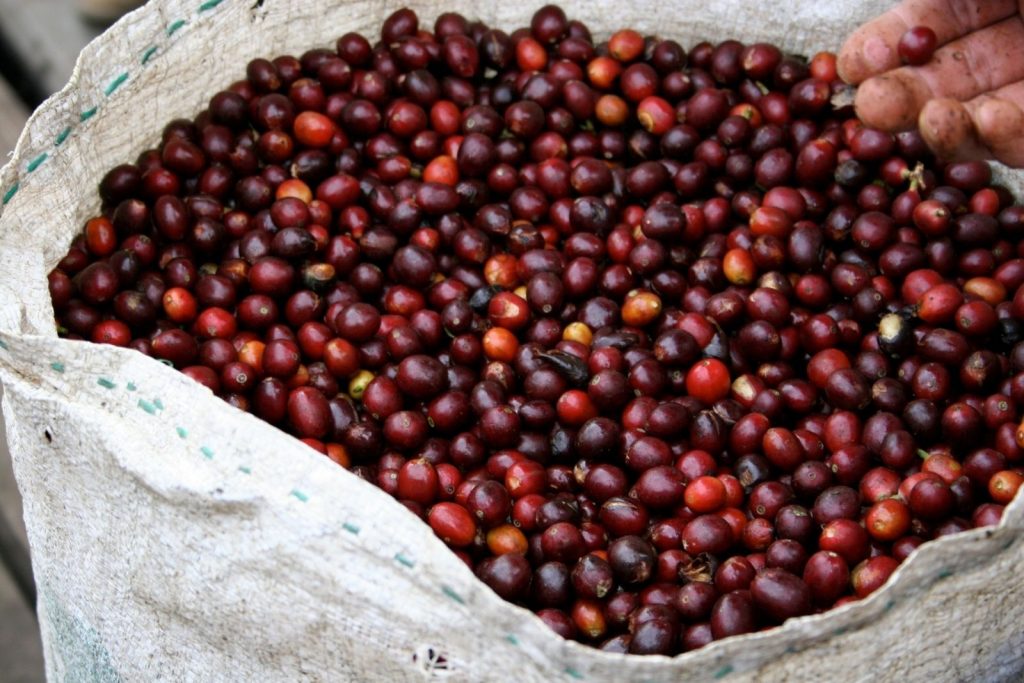
Environment
Precipitation, temperature, and humidity have a lot of say in a coffee’s maturation, overall flavor, and quality. Many coffee-producing countries are either primed for growing success or use alternative methods to improve their ecosystem.
Precipitation
1500m+
Temperature
17℃
Humidity
71%
Attitude
Elevated at over 1500 meters above sea level, the captivating Cau Dat – Da Lat region features a consistent temperate climate, with maximum temperatures never surpassing 33°C and minimums remaining above 5°C. The area’s fertile basaltic soil presents the optimal conditions for cultivating premium Arabica coffee.
Cau Dat’s distinguished Arabica exhibits a sophisticated blend of mild acidity and a hint of bitterness. Its transparent amber hue embodies the pristine environment from which it originates. The refined aroma harmonizes notes of syrup, fresh fruits, honey, toasted bread, and sunlit afternoons, creating a memorable sensory experience that captivates even the most discerning coffee aficionados.
Cau Dat’s Arabica confidently stands among the world’s elite coffee varieties, showcasing its unparalleled quality and the extraordinary potential of Vietnamese coffee.
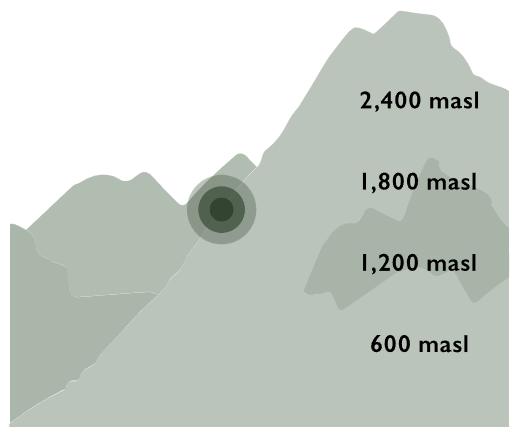
Processing
A coffee’s process describes how the seed (aka the coffee bean) is separated from the coffee cherry. Popular methods include washed, dry, and honey, but there are many other processes that put special emphasis on different aspects of these methods.
Washed
Fully Washed
Dried
Sun-dried
Natural
Fully Washed
Timeline
Harvest and export times are based off when a particular coffee will be at its peak quality. Cherries picked at the start of the harvest season tend to be underdeveloped, and those picked at the end are often overdeveloped, so producers aim for that sweet
Harvest
Export
Dec – Sept
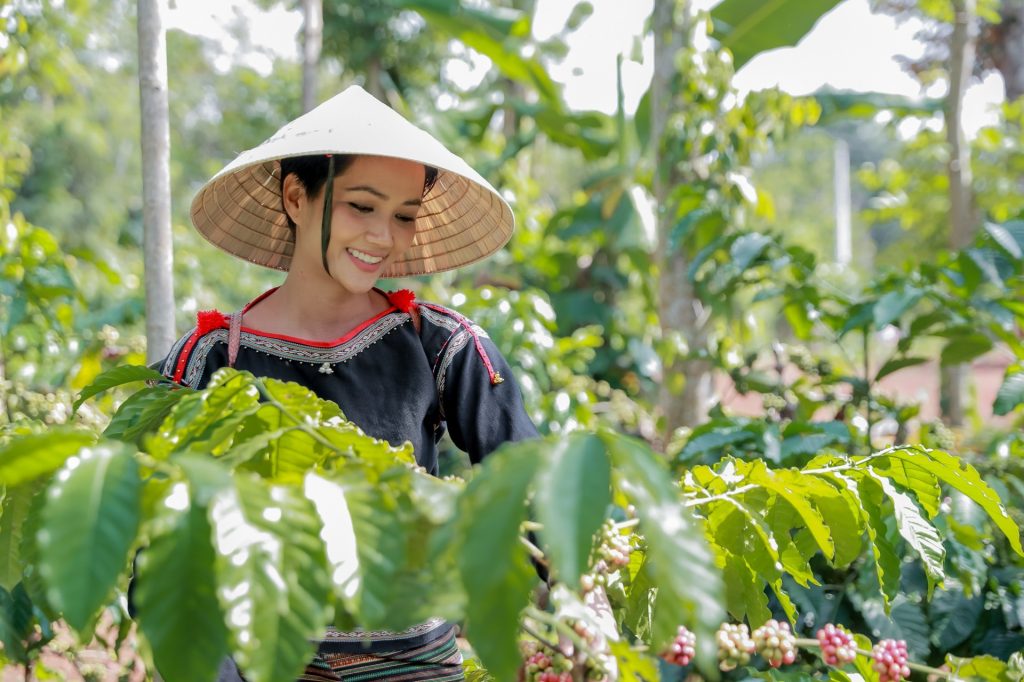
Cau Dat - Da Lat
Nestled just 24km from Da Lat city in Lam Dong Province, Cau Dat resides within the renowned Central Highlands of Vietnam. Boasting an ideal elevation and climate, this region has emerged as one of the premier locations for growing exceptional Arabica coffee.
With a vast expanse of 1,110 hectares dedicated to coffee cultivation—86% of the agricultural area—Cau Dat focuses predominantly on Arabica coffee, which makes up 98% of the total coffee crop. Remarkably suited to the local natural conditions, Cau Dat’s coffee plants thrive with minimal impact from pests. Each hectare yields an impressive 18-20 tons of fresh coffee cherries, equivalent to 4 tons of coffee beans, outpacing productivity in many other regions.
Discover the magic of Cau Dat’s Arabica coffee, where the perfect blend of elevation, climate, and dedication to quality come together to create a truly remarkable and unforgettable coffee experience.
Cau Dat has a total area of 1,110 hectares of coffee growing, accounting for 86% of the agricultural area. Especially, the area for Arabica coffee accounts for 98% of the total. Cau Dat coffee species generally really suit the natural conditions of this land and barely get affected by pests. Each hectare of the cultivated area can provide 18-20 tons of fresh coffee berries, equivalent to 4 tons of coffee beans. The productivity is much higher than other types.
